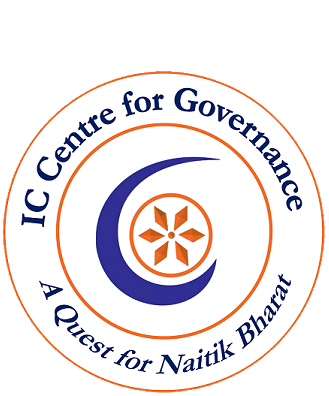India’s economic health is not in a good shape. The GDP growth stood at 8.3% in 2016-17 (there are some questions on this number) and then declined to 7.1% in 2017-18, 6.1% in 2018-19 and 4.2% in 2019-20. It suffered a contraction of 7.3% in 2020-21.
GDP growth in the current year (2021-22)stood at 20.1% in Q1, largely because of low base (in Q1 of 2020-21, GDP suffered a contraction 24.4). GDP growth in Q2 of 2021-22 is estimated at 8.4 percent as compared to 7.4 percent contraction in Q2 of 2020-21.
The truth is that our GDP number, at constant (2011-12) prices, for Q1 of 2021-22 is Rs. 32.38 lakh crore against Rs. 35.67 lakh crore for Q1 of 2019-20, and that for Q2 of 2021-22 is Rs. 35.73 lakh crore against Rs. 35.62 lakh crore for Q2 of 2019-20. Which means that practically we are where we were in 201920! And in 2019-20, GDP grew by a mere 4.2%.
Then, there are the issues of huge income and wealth disparities, huge unemployment and the poor delivery of educational and health outcomes.
Why is this so? Largely because of political-economy issues and lack of the requisite project and programme implementation capacity, resulting in distortions in allocation of public money and in gross inefficiencies in the use of public money.
Our policymakers don’t seem to be clear about what public money should be spent on. Public money is supposed to be spent for (a) the provision of public goods or goods with huge positive externalities, that is, goods and services which the private sector will not provide (examples: national defence, delivery of justice, control of pollution and elimination of open defecation), and (b) the provision of private goods and services to certain people on equity grounds (example: employment under MGNREGA).
Is public money being allocated along these lines? Does PM-KISAN qualify for allocation of public money? Is enough public money being spent on health, education and skill development to deliver the desired outcome of building economic capabilities among our people, especially among those who are underprivileged and exploited?
Our power distribution sector is a good example of gross inefficiencies in the use of public money. An initiative, called the Accelerated Power Development Programme, was launched by the Government of India’s Ministry of Power in February 2000. After two years, it was re-christened as the Accelerated Power Development and Reforms Programme (APDRP). On July 31, 2008, the APDRP was restructured.
In 2015, the Government launched a new scheme, called Integrated Power Development Scheme (IPDS), with the ongoing R-APDRP subsumed under IPDS. Then it launched UDAY (Ujwal Discom Assurance Yojana).
And now, while presenting the Government of India’s budget for 2021-22, the Finance Minister said “The viability of Distribution Companies is a serious concern. A revamped reforms-based result-linked power distribution sector scheme will be launched with an outlay of Rs. 3,05,984 crores over 5 years. The scheme will provide assistance to DISCOMS for infrastructure creation including pre-paid smart metering and feeder separation, up-gradation of systems, etc., tied to financial improvements.” This scheme has already been launched.
It has been roughly 22 years since the Accelerated Power Development Programme was launched in February 2000, but the power distribution sector continues to be in a mess -- indeed, it is in a bigger mess today! The twin balance sheet problem that we face today is because of this mess.
The Government may continue with schemes such as the ones it has launched during the last 22 years and spend lakhs of crores of rupees on them and the State Governments may take over the debts of their distribution Companies running into lakhs of crores of rupees, but the sad truth is that the distribution companies’ aggregate technical and commercial losses continue to be high and their financial viability continues to be a matter of serious concern, largely because of (a) the failure of Electricity Regulatory Commissions to come up with electricity tariffs which reflect all reasonable costs and (b) political patronage and the utility employees’ connivance.
I am worried about the country’s public finances. The three farm laws were very good. India needed them. But they were not properly managed. The state of India's public finances had played a major role in the Government of India's decision to go in for these laws. But now that these laws have been repealed, what will happen?
If the farmers stick to their demand of asking the Government to guarantee MSP for all the crops computed as per the Swaminathan Commission formula and procure all the quantities that the farmers offer, it will impose a huge burden on our public finances. Money will be needed not only for procuring the crops, but also for transporting them and for building the huge capacity required for warehousing them. Where is the money for all this?
- Anand P Gupta, Former Professor of Economics, Indian Institute of Management, Ahmedabad
